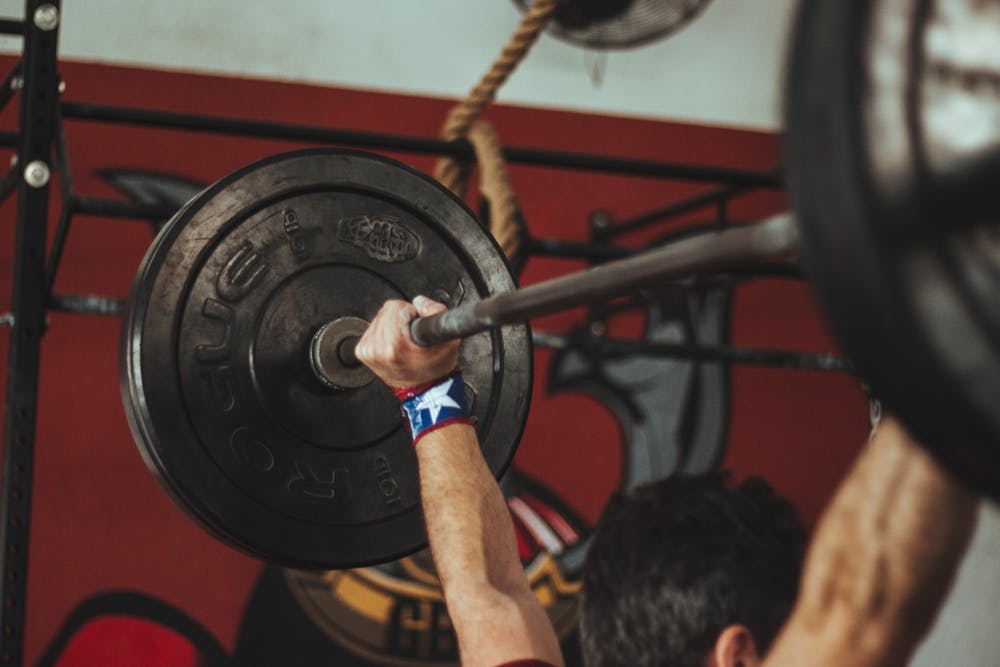Improve Your Shoulder Health and Overhead Position
Oct 17, 2019
So, let’s talk about the shoulder:
It is a very dynamic joint with little surface area between the humeral head and the glenoid fossa. The analogy we often use is a golf ball on a golf tee. There’s a reason why you hear more about shoulder dislocations than hip.
We have numerous muscle attachments and ligaments that surround the joint itself. These can be broken down into active (muscles/tendons) and passive stabilizers (ligaments). When we are going through different movements at the shoulder (whether that’s an overhead press, push up, clean, etc.), if we do not have the requisite range of motion, coordination or strength, then our passive stabilizers take on a lot of that stress. As I’ve said before, every single tissue (muscle, tendon, ligament, bone, etc.) in our body has a certain capacity and threshold. Stress is how we build those thresholds up. Stress is also how we break those down. When those thresholds are surpassed significantly or repeatedly, pain and injuries start to pop up. The dosage is the difference in having the poison or the antidote (- quote from someone smarter than me).
Now, how can we create more buffer room or bandwidth to withstand these stressors?
Smart and well thought-out training. Sure.
But, what about creating more freedom and control at the shoulder joint? Then, those tissues are less prone to getting overstressed and everyone is doing their jobs.
Today, our focus will be on the overhead archetype – which is an expression of shoulder flexion and external rotation. This can be anything related to pressing, reaching overhead, hanging, or throwing overhead.
I see people in the clinic every day that have pain with these movements and when we break these positions and joints down, we tend to see a limitation in one or both flexion and external rotation. Next, we’ll go through a test that you can utilize to see how your overhead position checks out.
Wall Test:
Common faults we see related to this are:
- Lower back extends/comes off the wall
- Rounding of the upper back
- Shrugging
- Rib cage flare
- Elbow bends
Try to avoid these mistakes and see where your true baseline overhead position is. After the techniques provided below, come back to this test and re-test the movement. Can you go further? How does the quality of getting there feel?
Next, we’ll look at some strategies to improve the mobility aspect of the shoulder joint.
Subscapularis Mobilizations:
Shoulder Overhead Opener:
When discussing the shoulder joint, I would be remiss not to mention the thoracic spine. The shoulder blade and thoracic spine/ribcage are very intimately related which directly impacts shoulder mechanics and position. Next, we’ll go through some techniques to address the thoracic spine.
T-Spine Mobilization:
Half-Kneeling Wall T-Spine Rotation with Lift Off:
Lastly, we will cover my favorite component in the performance process which is the strength and control of the shoulder joint for the overhead position.
Supine Eccentric Shoulder Flexion – Dowel or Single Arm with Plate:
-
Dowel Shoulder Flexion PAILS/RAILS:
Chaos Overhead Band Carry:
Now, you may be thinking, "These are great exercises, but how do I implement them?" Try them as movement prep prior to an overhead workout, accessory work on upper body days or even on recovery days. Do you have to do all of them? Nope. Find the ones that you feel had the best impact on you via the test-retest on the Wall Test and start implementing them in consistently. An active approach tends to work better in the long term compared to the passive approaches and exercises. You’ll be surprised how quickly your overhead position will improve and your overall shoulder health.
If you’re dealing with an injury, reach out with any questions. We design and implement rehab and performance programs to help our athletes, whether you’re someone who doesn’t know where to start or has had an unsuccessful rehab experience. It is our goal for the people we work with to return to their sport or activity performing better than they did before.
Cheers,
Dr. Ravi Patel, PT, DPT, CSCS
Let us help you figure out to live your best active life today!
Remember, Movement is Medicine!

